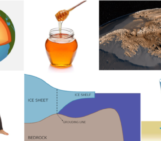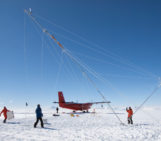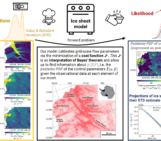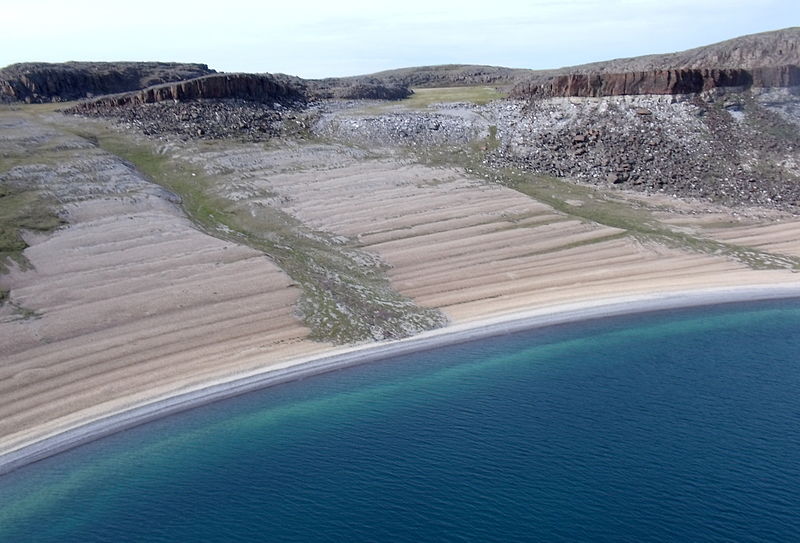
Rebounding beach in the Canadian Artic [Credit : Mike Beauregard distributed by Wikimedia Commons]
Global sea level is rising and will continue to do so over the next century, as has once again been shown in the recent IPCC special report on 1.5°C. But did you know that, in some places of our planet, local sea level is actually falling, and this due to rising of the continent itself?! Where is this happening? In places where huge ice sheets used to cover the land surface during the last ice age, such as Scandinavia, Canada, or Siberia. Even though these ice sheets melted several thousands of years ago, the land that once lied under them is still rising in reaction to the release of their previous burden. This is what we call Glacial Isostatic Adjustment or GIA. Where does this adjustment come from? Our Earth is not as solid as you would think…
Our Image of the Week represents a layered beach located in Nunavut, in the Canadian Arctic. This specific landform is caused by the glacial rebound of the Arctic coastline resulting from the response of the lithosphere to the melting of the Laurentide Ice sheet, an ice sheet that used to cover the North American continent until less than 10 000 years ago.
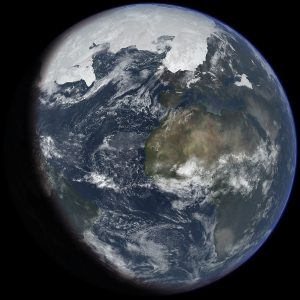
Earth during Last Ice Age [Credit: Wikimedia Commons]
What is Glacial Isostatic Adjustment?
Imagine sitting on a very comfy couch, watching a movie. At the end of the movie, the couch has perfectly adapted to the shape of your body. Once you get up, you’re still able to see where you’ve been sitting, as the couch takes a little time to get back to its original form. Well… this is exactly what happens with the Earth’s crust and mantle. To understand this, you need to visualize the internal structure of our planet Earth, which is layered in spherical shells: under our feet lie the rocky tectonic plates, which constitute the Earth’s crust. These crusty plates – whose thickness varies between a few kilometers under oceans to a few tens of kilometers under the continents – are floating on a viscous layer, called the mantle. It is almost 3000 kilometers thick and actually slowly flows like a liquid, at a speed of a few centimeters per year.
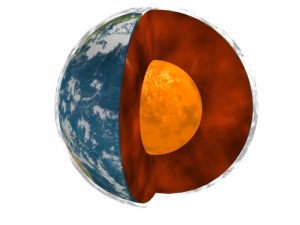
The Earth’s internal structure [Credit: NASA/JPL-Université Paris Diderot – Institut de Physique du Globe de Paris]
Even though the Earth’s crust is a very strong material, the pressure applied by an ice sheet thick of several kilometers is so important that the crust will locally deform under the heavy ice mass, sinking down into the viscous mantle. That’s what happened over large areas of the Northern Hemisphere that were covered by ice masses during the last ice age, and what is still happening in the remaining ice sheets of Greenland and Antarctica, which have been depressing the Earth’s crust beneath them for thousands of years.
Just like for the couch in the example above, when the weight is removed, the mantle rebounds, carrying with it the overlying crust. Over the 20 000 years since the last glacial maximum, lands now relieved of their previous ice-burden are gradually rebounding. The Earth’s delayed response to the variation of mass on its surface is explained by the viscous character of the Earth’s mantle.
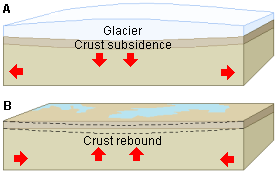
Glacial Isostatic Adjustment [Credit: Wikimedia Commons]
Why is it important to take it into account?
Even though the Siberian, Scandinavian and Laurentide ice sheets melted several thousands of years ago (causing a rise in global sea level), these regions that were previously glaciated are still locally emerging to compensate the loss of their overlying weight. The level of the coastline relative to the local sea-level thus increases. One says that the “relative sea level” is falling, and this at a rate that is essentially determined by the rate of the post-glacial rebound (which can exceed 1 cm/year in some areas, as shown in the figure below!). The rates of relative sea level can be influenced even at sites that are quite far away from the centres of the last glaciation, although it is much less significant.
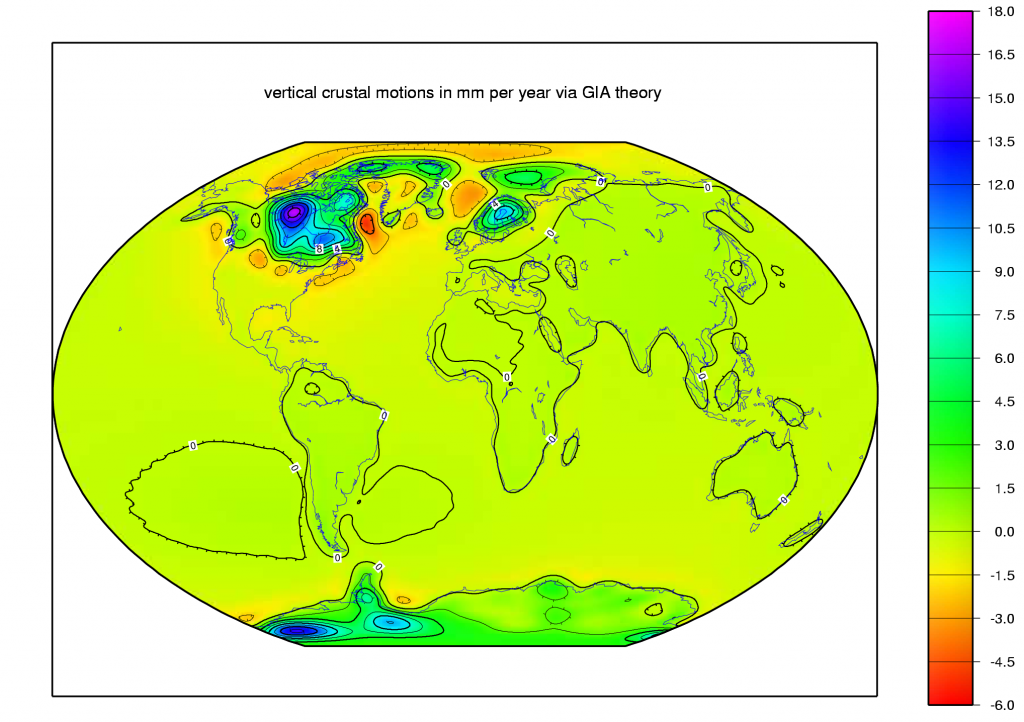
Rate of the post-glacial rebound [Credit: NASA, Wikimedia Commons]
A good understanding of glacial isostatic adjustment is important to distinguish the different components and contributors to a local sea-level evolution: what part is due to the uplift of the land? And what part is due to the rising of global sea-level?
In addition, glacial isostatic adjustment also impacts the behaviour of modern Greenland and Antarctic ice sheets. By influencing the geometry of the underlying bedrock, it will impact the sensitivity of the ice sheet to global warming and thus the glacial isostatic adjustment itself: this is a vicious circle!
The problem is that glacial isostatic adjustment also depends on the local properties of the Earth’s crust and mantle, which are not constant at the Earth’s surface. A lot of work is still needed to understand all of this properly. Luckily, since NASA launched GRACE – a satellite mission that maps variations in the Earth’s gravity field – in 2002, scientists have observations they can use to constrain their models and improve their understanding of this complicated matter.
Further reading
- Peltier, W.R. (2004). “Global Glacial Isostasy and the Surface of the Ice-Age Earth: The ICE-5G(VM2) model and GRACE”, Ann. Rev. Earth Planet. Sci., 32, 111-149.
- A, G., J. Wahr, and S. Zhong (2013) “Computations of the viscoelastic response of a 3-D compressible Earth to surface loading: an application to Glacial Isostatic Adjustment in Antarctica and Canada“, Geophys. J. Int., 192, 557–572, doi: 10.1093/gji/ggs030.
- Rate of lithospheric uplift due to Postglacial Rebound, as modelled by Paulson, A., S. Zhong, and J. Wahr (2007) “Inference of mantle viscosity from GRACE and relative sea level data”, Geophys. J. Int. 171, 497–508. doi: 10.1111/j.1365-246X.2007.03556.x
- Whitehouse et al. (2019) “Solid Earth change and the evolution of the Antarctic Ice Sheet”, Nature Communications, 10: 503, doi: doi.org/10.1038/s41467-018-08068-y.
- Image of the Week – The pulsating ice sheet
Edited by Clara Burgard and Sophie Berger


